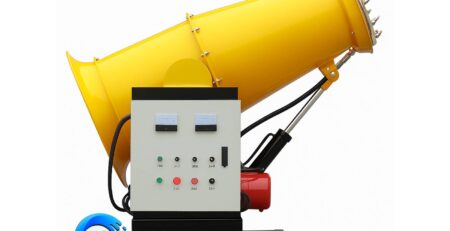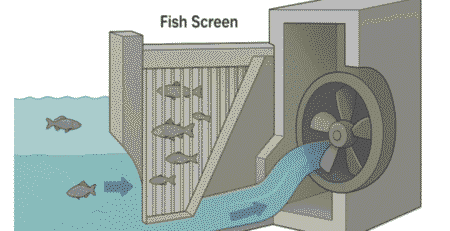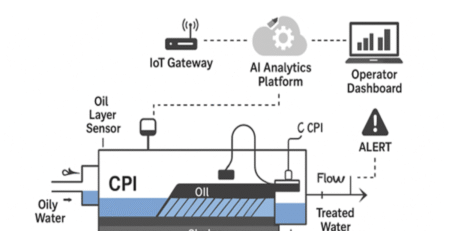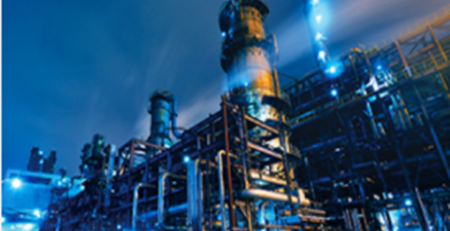Advancements in Membrane Technology for Zero Liquid Discharge Systems
Membrane Distillation (MD) is a thermally driven separation process, which uses a microporous hydrophobic membrane to transport vapour molecules across it. MD has a wide range of applications such as desalination, wastewater treatment and food processing.
Recent developments in MD include an impressive development in membrane materials, module configurations and process applications. However, it is still limited by a lack of fundamental understanding on the transport mechanisms, scaling and fouling phenomena in the membranes and their effects on operating conditions.
1. Energy Efficiency
Zero Liquid Discharge (ZLD) systems are an emerging industrial strategy to minimize liquid waste generation while extending water supply. In addition to reducing pollution and resource recovery, ZLD systems offer considerable energy and capital savings. However, the viability of these technologies depends on a balance between benefits and costs, especially in light of increasing global water scarcity and tightening restrictions for industrial wastewater discharges.
Advancements in membrane technology provide opportunities to significantly improve the energy efficiency of ZLD systems. In fact, these systems can use up to 80% less energy than stand-alone thermal processes used for ZLD systems in the past.
The membranes used in ZLD systems must have certain characteristics that can withstand the high organic load and total dissolved solids concentration, which is associated with high pressure. Moreover, they must be resistant to fouling from both organic and inorganic components that can reduce their operational lifespan.
In this article, advances in membrane technology for ZLD systems are reviewed and state of the art research is outlined. In particular, the paper discusses the development of osmotically assisted reverse osmosis and low salt rejection reverse osmosis membranes.
Membrane crystallization (MCr) is a new membrane process that can extract simultaneously fresh water and valuable components from different streams, such as produced water. MCr can be used to treat produced water, which is the largest and most complex wastewater stream from oil and gas production.
MCr is capable of producing NaCl crystals from highly concentrated sodium chloride solutions, and it can also be used to recover evaporation byproducts from industrial wastes, such as in a brine concentrator. The pore structure of the membrane, as well as its temperature and hydrodynamic conditions, play a crucial role in determining the process performance.
To improve the permeate flux and energy consumption in MCr, several studies have been conducted on different pore sizes, membranes and operating conditions. The results demonstrate that a higher permeate flux and better energy efficiency can be obtained in the case of a membrane with a lower pore size.
In addition to membrane material and module configuration, research has been conducted on VMD, a novel membrane distillation technique in which vapor is extracted using vacuum pressure. This method offers a vapor pressure gradient across the membrane, which can be enhanced by localized heating techniques. Additionally, it can reduce the heat losses caused by conventional condensers.
2. Environmental Impact
Advancements in membrane technology for zero liquid discharge systems are resulting in better water recovery from industrial effluents and helping to meet the increasing demand for water reuse. As a result, these technologies have become increasingly popular for their ability to effectively manage complex wastewaters.
Advances in membrane technology have also led to improvements in evaporation efficiency and reduced energy consumption, which translates into lower operating costs for operators. Furthermore, these developments have allowed companies to reduce the amount of wastewater they produce, which has a positive impact on the environment.
The growing pressure on global freshwater resources is a key factor driving the demand for ZLD and MLD solutions. This is mainly driven by the growing population and the need to develop efficient methods of waste management. In addition, stringent environmental regulations imposed on industries and power plants to prevent pollution of surface waters have also played an important role in the growth of the industry.
Moreover, implementing stricter regulations on industrial wastewater discharge has enabled industries to focus on the use of alternative waste-treatment processes that do not require large amounts of freshwater. This, in turn, has contributed to a reduction in the volume of wastewater that needs to be treated in the first place.
However, a number of challenges remain. Among these, one of the most significant is the high energy requirements of conventional zero liquid discharge (ZLD) technologies. This is primarily due to the high energy consumption of thermal evaporators used for removing impurities from the liquid effluent.
To address these challenges, researchers have developed new technologies that are capable of reducing the load on thermal evaporators and lowering the energy consumption of ZLD systems. This is particularly beneficial for large-scale industrial processes that can generate several thousand tons of waste per day.
For example, in an industrial plant that produces a high concentration of sodium chloride (NaCl), a ZLD system with membrane-based pretreatment followed by brine concentrators can significantly decrease the amount of thermal evaporation required to remove NaCl, thus lowering energy consumption and operating costs.
Moreover, advancements in membrane technology have made it possible for companies to achieve higher levels of purity and lower residual salt content in their products. This has enabled manufacturers to increase their market share and improve profitability. This has also helped to increase the sustainability of their operations, which is vital for the success of any industrial facility.
3. Cost
Advancements in membrane technology are helping to increase the energy efficiency of ZLD systems. These technologies help to reduce the volume of water entering brine concentrators and crystallizers, which can result in lower operating costs for these systems. Additionally, these technologies may also recover useful materials such as ammonium sulfate, which can be used as fertilizer.
Membrane distillation (MD) is a thermally driven process that separates vapour molecules from solid contaminants using a microporous hydrophobic membrane. This process has a variety of applications in the fields of desalination, wastewater treatment and food processing. However, the MD process is still in its nascent stages of development.
One of the challenges in developing MD membranes is fouling. Fouling is the build-up of unwanted material on the surface or inside the pores of a membrane that can lead to early membrane replacement and shutdown of the process.
Another major challenge in membrane design is that it needs to be compatible with a range of different feedwaters and concentration factors. This is a key factor that can determine the cost of the system.
Therefore, it is important to choose a membrane that has a low propensity to fouling and can withstand the stresses of varying concentration factors. Moreover, it should also have high performance at low operating pressures and temperatures.
In addition, the membrane should be able to maintain its permeability as it is re-introduced to the process. This is a critical aspect for the long-term operational reliability of MD membranes.
To further enhance the energy efficiency of ZLD systems, membrane-based salt concentrating technologies have been developed. These technologies help to reduce the volume of concentrated brine entering brine crystallizers and evaporation ponds, which can result in lower operating costs for ZLD systems.
Additionally, these technologies may also recover useful materials from the concentrated brine. These materials can be disposed of or reused in other processes, further decreasing the cost of ZLD.
Despite these cost benefits, implementing ZLD can be difficult for industrial users. This is primarily because it requires the installation of new equipment, personnel and procedures. Moreover, it may be challenging to ensure that all the waste produced by a plant can be recycled or reused in other processes.
4. Performance
Advancements in membrane technology have boosted performance and reduced costs for hybrid zero liquid discharge (ZLD) systems. These membrane technologies include forward osmosis, microfiltration, ultrafiltration, nanofiltration, and reverse osmosis.
Pressure driven membrane processes are a type of water reclamation system used in wastewater treatment [6,7]. They use hydraulic pressure to separate dissolved contaminants. These membranes are based on either organic or inorganic materials. They are also able to handle the high pressure and temperature requirements associated with wastewater treatment.
Typically, a pressure driven membrane process can be applied as a pretreatment step to a reverse osmosis (RO) membrane system. This reduces fouling of the RO membrane, which increases the efficiencies and maintenance of constant flux. MF, UF, and NF are also commonly applied as pretreatment steps to osmosis processes for separation of dissolved solids and suspended particles.
Membrane technologies are a great option for ZLD systems because they can reduce costs and energy usage. They also decrease the need for waste disposal. In addition, membranes can recycle wastewater on site instead of sending it to a landfill.
Many industrial facilities and municipalities are trying to recover and reuse as much of their wastewater as possible. This requires wastewater treatment systems that are capable of meeting stringent zero liquid discharge standards.
The market for zero liquid discharge water treatment systems is expected to grow rapidly over the next decade. This is due to the growing demand for water and the need for clean water supplies. In addition, government regulations around the world are ratcheting up the standards for liquid waste products that enter the environment.
To address this need, industries are using zero liquid discharge (ZLD) processes to reduce the volume of wastewater that is sent to a landfill and recycle it. This decreases the need for waste disposal and lowers the costs of transportation to a landfill.
In addition, if waste is collected and treated, it can be reused for valuable byproducts or sold as raw materials. Lastly, ZLD systems are more energy efficient than other wastewater treatment methods.
As the need for clean water grows, industry leaders are looking to new and advanced solutions to meet this demand. These advances are driving the hybrid zero liquid discharge system market. With advanced membrane technologies and multi-step treatment solutions, these systems can help businesses save energy and reduce costs for mineral recovery.












